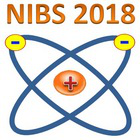Speaker
Dr
Christian Wimmer
(Max-Planck-Institut für Plasmaphysik)
Description
The Neutral Beam Injection (NBI) system for ITER requires large scale sources for negative hydrogen ions. The ELISE test facility at IPP Garching uses a ½ scale ITER-source (extraction area of 0.1 m$^2$ at ELISE) and shall demonstrate the feasibility of the ITER parameters (extracted $j_\mathrm{H^-} = 329~ \mathrm{A/m^2}$ for 1000 s, $j_\mathrm{D^-} = 286~\mathrm{A/m^2}$ for 3600 s, with a co-extracted electron current below the ion current at a source filling pressure of below 0.3 Pa). In long pulses the co-extracted electron current density $j_\mathrm{e}$ is strongly increasing and usually limits the source performance. Two measures for stabilizing and lowering $j_\mathrm{e}$ have been applied at ELISE in the past: on the one hand adding bars of permanent magnets outside of the source strengthening the magnetic filter field and on the other hand the installation of potential rods perpendicular to the magnetic field lines close to the extraction system. Since $\mathbf{F} \times \mathbf{B}$ drifts lead to a vertically asymmetric plasma, an influence of both measures on the plasma symmetry is expected by modifying the magnetic field or electric potential topology in the source. The plasma asymmetry is a crucial parameter, since it may lead to an inhomogeneous beam under certain conditions. The change of the plasma symmetry close to the extraction system, determined by two double probes, is presented.
Primary author
Dr
Christian Wimmer
(Max-Planck-Institut für Plasmaphysik)
Co-authors
Mrs
Isabella Mario
(Max-Planck-Institut für Plasmaphysik)
NNBI Team
(Max-Planck-Institut für Plasmaphysik)
Prof.
Ursel Fantz
(Max-Planck-Institut für Plasmaphysik)

